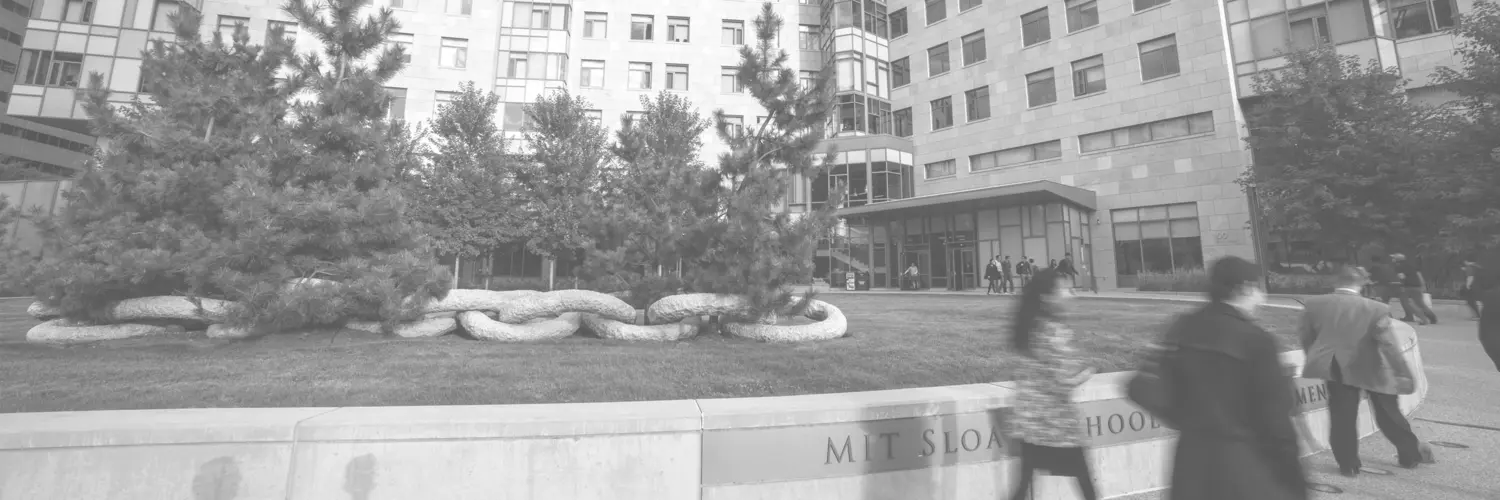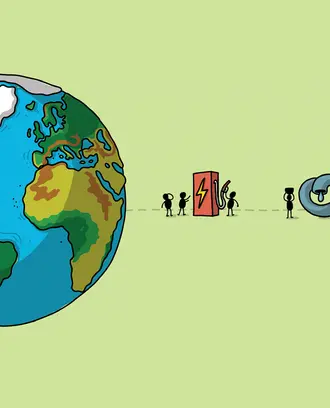Credit: Moomusician / Shutterstock
Business has a role to play in mitigating climate change. Here are 4 actions to take
More and more people believe that the world is not going to hit its climate goals by 2050, or maybe ever. They say it’s time to double down on technology to predict and adapt to the effects of climate change and give up on mitigation — that is, cutting emissions.
MIT Sloan professor says we need both adaptation and mitigation.
“Greenhouse gas emissions are at an all-time record, and there’s no doubt we’re going to have to do a better job at adaptation,” said Sterman, faculty director of the MIT Climate Pathways Project. “But while we must adapt, adaptation without mitigation is futile.”
At the MIT Sustainability Summit 2025, Sterman gave an impassioned defense of carbon reduction and mitigation. He stressed the need for “multisolving” — actions that cut emissions and help us adapt to the climate damage we have already caused. Such actions can:
- Slow climate change and limit the damage it causes.
- Improve resiliency for businesses, organizations, and communities.
- Strengthen individual, national, and global security.
- Safeguard our collective health.
- Improve societal equity.
- Promote prosperity.
Many actions that can reduce greenhouse gas emissions and limit climate change require public policy, such as the U.S. Inflation Reduction Act. But the private sector will also play a pivotal role. Many businesses have committed to strong, science-based targets to reduce their own emissions and are following through on them. Others are choosing to invest in carbon offsets.
Sterman has long urged business leaders to choose carbon offsets that actually cut emissions and to use the interactive En-ROADS climate solutions simulator, co-developed by MIT and the nonprofit think tank Climate Interactive, to explore how dozens of actions affect the climate and their businesses.
In his keynote, Sterman highlighted four ways the private sector can respond to climate change.
1. Commit to highly efficient buildings
Without deep emissions cuts, Earth is on track to warm at least 3 degrees Celsius (5.4 degrees Fahrenheit) this century; building energy-efficient new structures and rehabbing old ones is crucial to curbing this rise. Sterman argues for deep energy retrofits for all buildings, especially low-income housing.
Related Articles
“Businesses often find efficient buildings pay off economically. And too many disadvantaged people are forced to choose between heating and eating in winter and can’t afford the electric bills for air conditioning in summer — if they have AC at all,” Sterman said.
Deep retrofits solve these problems, but the owners and the occupants of low-income housing don’t have the resources to do it themselves and need some assistance. “It’s assistance that not only cuts emissions but lowers utility bills, improves health, creates jobs, and builds resilience,” Sterman said.
2. Tap into alternative electricity sources
Microgrids are great for creating resiliency and reducing emissions, Sterman said. These miniature electrical grids are powered by renewable sources, such as solar, wind, and geothermal. Because they operate outside of the larger municipal electrical system, they’re more reliable, thereby ensuring that there’s backup power when needed.
“If you combine [deep energy retrofits] with microgrids — powered by rooftop [or] community solar, maybe some wind where it’s appropriate and district geothermal, you’ve created a much more resilient environment,” Sterman said.
For example, when winter storm Uri hit Texas in 2021, widespread blackouts caused more than $200 billion in damage and many deaths, but in a few communities with microgrids “the power stayed on, and the houses stayed warm,” Sterman said.
3. Invest in greener cities, and preserve adjacent ecosystems
Planting trees in cities cuts emissions and helps people adapt to extreme heat. Trees reduce the urban heat island effect and the need for air conditioning and help protect people from heat stress.
Adding bike lanes encourages people to travel by two wheels instead of four, said Sterman, who is well-known for riding his bike to work every day. Private businesses can help by providing on-site bike parking and shower facilities, and working with the communities in which they operate to build safe bike lanes.
Companies can also be instrumental in asserting their influence beyond the city limits by helping to preserve and restore local forests, wetlands, and mangroves (coastal forests). These ecosystems sequester carbon, prevent flooding from sea-level rise and more extreme storms, and support biodiversity. Mangroves, for example, are highly effective at capturing carbon but are disappearing because of coastal development. “Nature-based carbon dioxide removal can make a difference,” Sterman said. “We need to work on restoring the natural environment that we’ve already compromised.”
4. Contract with CSAs, and support local food production
“We need to cut the emissions from agriculture,” Sterman said, noting that enrolling in a local community-supported agriculture program is a good place to start.
Doing so minimizes the need for long-distance transportation (a major greenhouse gas contributor). It also increases resilience throughout the food system so that even when there’s a disruption, such as a weather event or a supply chain issue, people still have access to food.
Businesses can play a big role by contracting for local, healthy food, hosting farmer’s markets, and reducing food waste, thus helping to build local, sustainable food supply chains. These actions are appreciated by many employees and help build loyalty.
“Every 10th of a degree matters”
In his closing comments, Sterman emphasized that relatively simple measures can add up and help lower emissions and the Earth’s average temperature. Last year, Earth experienced its hottest year in recorded history, and experts say that we need to stay below a 1.5 C increase in global warming.
“Every 10th of a degree matters,” Sterman said. “Every 10th of a degree rise in temperature that we can prevent gives us more time, saves lives, improves the economy, and builds our security.”
Try the En-ROADS climate action visualization tool



